-
EXECUTIVE SUMMARY
-
Market Overview
-
Key Findings
-
Market Segmentation
-
Competitive Landscape
-
Challenges and Opportunities
-
Future Outlook
-
MARKET INTRODUCTION
-
Definition
-
Scope of the study
- Research Objective
- Assumption
- Limitations
-
RESEARCH METHODOLOGY
-
Overview
-
Data Mining
-
Secondary Research
-
Primary Research
- Primary Interviews and Information Gathering Process
- Breakdown of Primary Respondents
-
Forecasting Model
-
Market Size Estimation
- Bottom-Up Approach
- Top-Down Approach
-
Data Triangulation
-
Validation
-
MARKET DYNAMICS
-
Overview
-
Drivers
-
Restraints
-
Opportunities
-
MARKET FACTOR ANALYSIS
-
Value chain Analysis
-
Porter's Five Forces Analysis
- Bargaining Power of Suppliers
- Bargaining Power of Buyers
- Threat of New Entrants
- Threat of Substitutes
- Intensity of Rivalry
-
COVID-19 Impact Analysis
- Market Impact Analysis
- Regional Impact
- Opportunity and Threat Analysis
-
FEED ADDITIVES MARKET, BY TYPE (USD BILLION)
-
Amino Acids
-
Vitamins
-
Carotenoids
-
Enzymes
-
Prebiotics & Probiotics
-
Minerals
-
Acidifiers
-
Lipids
-
Others
-
FEED ADDITIVES MARKET, BY FORM (USD BILLION)
-
Dry
-
Liquid
-
FEED ADDITIVES MARKET, BY LIVESTOCK (USD BILLION)
-
Poultry
-
Swine
-
Ruminants
-
Others
-
FEED ADDITIVES MARKET, BY REGIONAL (USD BILLION)
-
North America
- US
- Canada
-
Europe
- Germany
- UK
- France
- Russia
- Italy
- Spain
- Rest of Europe
-
APAC
- China
- India
- Japan
- South Korea
- Malaysia
- Thailand
- Indonesia
- Rest of APAC
-
South America
- Brazil
- Mexico
- Argentina
- Rest of South America
-
MEA
- GCC Countries
- South Africa
- Rest of MEA
-
COMPETITIVE LANDSCAPE
-
Overview
-
Competitive Analysis
-
Market share Analysis
-
Major Growth Strategy in the Feed Additives Market
-
Competitive Benchmarking
-
Leading Players in Terms of Number of Developments in the Feed Additives Market
-
Key developments and growth strategies
- New Product Launch/Service Deployment
- Merger & Acquisitions
- Joint Ventures
-
Major Players Financial Matrix
- Sales and Operating Income
- Major Players R&D Expenditure. 2023
-
COMPANY PROFILES
-
ADM
- Financial Overview
- Products Offered
- Key Developments
- SWOT Analysis
- Key Strategies
-
Cargill
- Financial Overview
- Products Offered
- Key Developments
- SWOT Analysis
- Key Strategies
-
Novus International
- Financial Overview
- Products Offered
- Key Developments
- SWOT Analysis
- Key Strategies
-
Addcon
- Financial Overview
- Products Offered
- Key Developments
- SWOT Analysis
- Key Strategies
-
Royal DSM
- Financial Overview
- Products Offered
- Key Developments
- SWOT Analysis
- Key Strategies
-
Prosol
- Financial Overview
- Products Offered
- Key Developments
- SWOT Analysis
- Key Strategies
-
Nutreco
- Financial Overview
- Products Offered
- Key Developments
- SWOT Analysis
- Key Strategies
-
Pancosma
- Financial Overview
- Products Offered
- Key Developments
- SWOT Analysis
- Key Strategies
-
Biomin
- Financial Overview
- Products Offered
- Key Developments
- SWOT Analysis
- Key Strategies
-
Alltech
- Financial Overview
- Products Offered
- Key Developments
- SWOT Analysis
- Key Strategies
-
BASF
- Financial Overview
- Products Offered
- Key Developments
- SWOT Analysis
- Key Strategies
-
Lallemand
- Financial Overview
- Products Offered
- Key Developments
- SWOT Analysis
- Key Strategies
-
Kemin
- Financial Overview
- Products Offered
- Key Developments
- SWOT Analysis
- Key Strategies
-
Angel Yeast
- Financial Overview
- Products Offered
- Key Developments
- SWOT Analysis
- Key Strategies
-
Evonik
- Financial Overview
- Products Offered
- Key Developments
- SWOT Analysis
- Key Strategies
-
APPENDIX
-
References
-
Related Reports
-
LIST OF TABLES
-
\r\n
-
LIST OF ASSUMPTIONS
-
NORTH AMERICA FEED ADDITIVES MARKET SIZE ESTIMATES & FORECAST, BY TYPE, 2019-2035 (USD BILLIONS)
-
NORTH AMERICA FEED ADDITIVES MARKET SIZE ESTIMATES & FORECAST, BY FORM, 2019-2035 (USD BILLIONS)
-
NORTH AMERICA FEED ADDITIVES MARKET SIZE ESTIMATES & FORECAST, BY LIVESTOCK, 2019-2035 (USD BILLIONS)
-
NORTH AMERICA FEED ADDITIVES MARKET SIZE ESTIMATES & FORECAST, BY REGIONAL, 2019-2035 (USD BILLIONS)
-
US FEED ADDITIVES MARKET SIZE ESTIMATES & FORECAST, BY TYPE, 2019-2035 (USD BILLIONS)
-
US FEED ADDITIVES MARKET SIZE ESTIMATES & FORECAST, BY FORM, 2019-2035 (USD BILLIONS)
-
US FEED ADDITIVES MARKET SIZE ESTIMATES & FORECAST, BY LIVESTOCK, 2019-2035 (USD BILLIONS)
-
US FEED ADDITIVES MARKET SIZE ESTIMATES & FORECAST, BY REGIONAL, 2019-2035 (USD BILLIONS)
-
CANADA FEED ADDITIVES MARKET SIZE ESTIMATES & FORECAST, BY TYPE, 2019-2035 (USD BILLIONS)
-
CANADA FEED ADDITIVES MARKET SIZE ESTIMATES & FORECAST, BY FORM, 2019-2035 (USD BILLIONS)
-
CANADA FEED ADDITIVES MARKET SIZE ESTIMATES & FORECAST, BY LIVESTOCK, 2019-2035 (USD BILLIONS)
-
CANADA FEED ADDITIVES MARKET SIZE ESTIMATES & FORECAST, BY REGIONAL, 2019-2035 (USD BILLIONS)
-
EUROPE FEED ADDITIVES MARKET SIZE ESTIMATES & FORECAST, BY TYPE, 2019-2035 (USD BILLIONS)
-
EUROPE FEED ADDITIVES MARKET SIZE ESTIMATES & FORECAST, BY FORM, 2019-2035 (USD BILLIONS)
-
EUROPE FEED ADDITIVES MARKET SIZE ESTIMATES & FORECAST, BY LIVESTOCK, 2019-2035 (USD BILLIONS)
-
EUROPE FEED ADDITIVES MARKET SIZE ESTIMATES & FORECAST, BY REGIONAL, 2019-2035 (USD BILLIONS)
-
GERMANY FEED ADDITIVES MARKET SIZE ESTIMATES & FORECAST, BY TYPE, 2019-2035 (USD BILLIONS)
-
GERMANY FEED ADDITIVES MARKET SIZE ESTIMATES & FORECAST, BY FORM, 2019-2035 (USD BILLIONS)
-
GERMANY FEED ADDITIVES MARKET SIZE ESTIMATES & FORECAST, BY LIVESTOCK, 2019-2035 (USD BILLIONS)
-
GERMANY FEED ADDITIVES MARKET SIZE ESTIMATES & FORECAST, BY REGIONAL, 2019-2035 (USD BILLIONS)
-
UK FEED ADDITIVES MARKET SIZE ESTIMATES & FORECAST, BY TYPE, 2019-2035 (USD BILLIONS)
-
UK FEED ADDITIVES MARKET SIZE ESTIMATES & FORECAST, BY FORM, 2019-2035 (USD BILLIONS)
-
UK FEED ADDITIVES MARKET SIZE ESTIMATES & FORECAST, BY LIVESTOCK, 2019-2035 (USD BILLIONS)
-
UK FEED ADDITIVES MARKET SIZE ESTIMATES & FORECAST, BY REGIONAL, 2019-2035 (USD BILLIONS)
-
FRANCE FEED ADDITIVES MARKET SIZE ESTIMATES & FORECAST, BY TYPE, 2019-2035 (USD BILLIONS)
-
FRANCE FEED ADDITIVES MARKET SIZE ESTIMATES & FORECAST, BY FORM, 2019-2035 (USD BILLIONS)
-
FRANCE FEED ADDITIVES MARKET SIZE ESTIMATES & FORECAST, BY LIVESTOCK, 2019-2035 (USD BILLIONS)
-
FRANCE FEED ADDITIVES MARKET SIZE ESTIMATES & FORECAST, BY REGIONAL, 2019-2035 (USD BILLIONS)
-
RUSSIA FEED ADDITIVES MARKET SIZE ESTIMATES & FORECAST, BY TYPE, 2019-2035 (USD BILLIONS)
-
RUSSIA FEED ADDITIVES MARKET SIZE ESTIMATES & FORECAST, BY FORM, 2019-2035 (USD BILLIONS)
-
RUSSIA FEED ADDITIVES MARKET SIZE ESTIMATES & FORECAST, BY LIVESTOCK, 2019-2035 (USD BILLIONS)
-
RUSSIA FEED ADDITIVES MARKET SIZE ESTIMATES & FORECAST, BY REGIONAL, 2019-2035 (USD BILLIONS)
-
ITALY FEED ADDITIVES MARKET SIZE ESTIMATES & FORECAST, BY TYPE, 2019-2035 (USD BILLIONS)
-
ITALY FEED ADDITIVES MARKET SIZE ESTIMATES & FORECAST, BY FORM, 2019-2035 (USD BILLIONS)
-
ITALY FEED ADDITIVES MARKET SIZE ESTIMATES & FORECAST, BY LIVESTOCK, 2019-2035 (USD BILLIONS)
-
ITALY FEED ADDITIVES MARKET SIZE ESTIMATES & FORECAST, BY REGIONAL, 2019-2035 (USD BILLIONS)
-
SPAIN FEED ADDITIVES MARKET SIZE ESTIMATES & FORECAST, BY TYPE, 2019-2035 (USD BILLIONS)
-
SPAIN FEED ADDITIVES MARKET SIZE ESTIMATES & FORECAST, BY FORM, 2019-2035 (USD BILLIONS)
-
SPAIN FEED ADDITIVES MARKET SIZE ESTIMATES & FORECAST, BY LIVESTOCK, 2019-2035 (USD BILLIONS)
-
SPAIN FEED ADDITIVES MARKET SIZE ESTIMATES & FORECAST, BY REGIONAL, 2019-2035 (USD BILLIONS)
-
REST OF EUROPE FEED ADDITIVES MARKET SIZE ESTIMATES & FORECAST, BY TYPE, 2019-2035 (USD BILLIONS)
-
REST OF EUROPE FEED ADDITIVES MARKET SIZE ESTIMATES & FORECAST, BY FORM, 2019-2035 (USD BILLIONS)
-
REST OF EUROPE FEED ADDITIVES MARKET SIZE ESTIMATES & FORECAST, BY LIVESTOCK, 2019-2035 (USD BILLIONS)
-
REST OF EUROPE FEED ADDITIVES MARKET SIZE ESTIMATES & FORECAST, BY REGIONAL, 2019-2035 (USD BILLIONS)
-
APAC FEED ADDITIVES MARKET SIZE ESTIMATES & FORECAST, BY TYPE, 2019-2035 (USD BILLIONS)
-
APAC FEED ADDITIVES MARKET SIZE ESTIMATES & FORECAST, BY FORM, 2019-2035 (USD BILLIONS)
-
APAC FEED ADDITIVES MARKET SIZE ESTIMATES & FORECAST, BY LIVESTOCK, 2019-2035 (USD BILLIONS)
-
APAC FEED ADDITIVES MARKET SIZE ESTIMATES & FORECAST, BY REGIONAL, 2019-2035 (USD BILLIONS)
-
CHINA FEED ADDITIVES MARKET SIZE ESTIMATES & FORECAST, BY TYPE, 2019-2035 (USD BILLIONS)
-
CHINA FEED ADDITIVES MARKET SIZE ESTIMATES & FORECAST, BY FORM, 2019-2035 (USD BILLIONS)
-
CHINA FEED ADDITIVES MARKET SIZE ESTIMATES & FORECAST, BY LIVESTOCK, 2019-2035 (USD BILLIONS)
-
CHINA FEED ADDITIVES MARKET SIZE ESTIMATES & FORECAST, BY REGIONAL, 2019-2035 (USD BILLIONS)
-
INDIA FEED ADDITIVES MARKET SIZE ESTIMATES & FORECAST, BY TYPE, 2019-2035 (USD BILLIONS)
-
INDIA FEED ADDITIVES MARKET SIZE ESTIMATES & FORECAST, BY FORM, 2019-2035 (USD BILLIONS)
-
INDIA FEED ADDITIVES MARKET SIZE ESTIMATES & FORECAST, BY LIVESTOCK, 2019-2035 (USD BILLIONS)
-
INDIA FEED ADDITIVES MARKET SIZE ESTIMATES & FORECAST, BY REGIONAL, 2019-2035 (USD BILLIONS)
-
JAPAN FEED ADDITIVES MARKET SIZE ESTIMATES & FORECAST, BY TYPE, 2019-2035 (USD BILLIONS)
-
JAPAN FEED ADDITIVES MARKET SIZE ESTIMATES & FORECAST, BY FORM, 2019-2035 (USD BILLIONS)
-
JAPAN FEED ADDITIVES MARKET SIZE ESTIMATES & FORECAST, BY LIVESTOCK, 2019-2035 (USD BILLIONS)
-
JAPAN FEED ADDITIVES MARKET SIZE ESTIMATES & FORECAST, BY REGIONAL, 2019-2035 (USD BILLIONS)
-
SOUTH KOREA FEED ADDITIVES MARKET SIZE ESTIMATES & FORECAST, BY TYPE, 2019-2035 (USD BILLIONS)
-
SOUTH KOREA FEED ADDITIVES MARKET SIZE ESTIMATES & FORECAST, BY FORM, 2019-2035 (USD BILLIONS)
-
SOUTH KOREA FEED ADDITIVES MARKET SIZE ESTIMATES & FORECAST, BY LIVESTOCK, 2019-2035 (USD BILLIONS)
-
SOUTH KOREA FEED ADDITIVES MARKET SIZE ESTIMATES & FORECAST, BY REGIONAL, 2019-2035 (USD BILLIONS)
-
MALAYSIA FEED ADDITIVES MARKET SIZE ESTIMATES & FORECAST, BY TYPE, 2019-2035 (USD BILLIONS)
-
MALAYSIA FEED ADDITIVES MARKET SIZE ESTIMATES & FORECAST, BY FORM, 2019-2035 (USD BILLIONS)
-
MALAYSIA FEED ADDITIVES MARKET SIZE ESTIMATES & FORECAST, BY LIVESTOCK, 2019-2035 (USD BILLIONS)
-
MALAYSIA FEED ADDITIVES MARKET SIZE ESTIMATES & FORECAST, BY REGIONAL, 2019-2035 (USD BILLIONS)
-
THAILAND FEED ADDITIVES MARKET SIZE ESTIMATES & FORECAST, BY TYPE, 2019-2035 (USD BILLIONS)
-
THAILAND FEED ADDITIVES MARKET SIZE ESTIMATES & FORECAST, BY FORM, 2019-2035 (USD BILLIONS)
-
THAILAND FEED ADDITIVES MARKET SIZE ESTIMATES & FORECAST, BY LIVESTOCK, 2019-2035 (USD BILLIONS)
-
THAILAND FEED ADDITIVES MARKET SIZE ESTIMATES & FORECAST, BY REGIONAL, 2019-2035 (USD BILLIONS)
-
INDONESIA FEED ADDITIVES MARKET SIZE ESTIMATES & FORECAST, BY TYPE, 2019-2035 (USD BILLIONS)
-
INDONESIA FEED ADDITIVES MARKET SIZE ESTIMATES & FORECAST, BY FORM, 2019-2035 (USD BILLIONS)
-
INDONESIA FEED ADDITIVES MARKET SIZE ESTIMATES & FORECAST, BY LIVESTOCK, 2019-2035 (USD BILLIONS)
-
INDONESIA FEED ADDITIVES MARKET SIZE ESTIMATES & FORECAST, BY REGIONAL, 2019-2035 (USD BILLIONS)
-
REST OF APAC FEED ADDITIVES MARKET SIZE ESTIMATES & FORECAST, BY TYPE, 2019-2035 (USD BILLIONS)
-
REST OF APAC FEED ADDITIVES MARKET SIZE ESTIMATES & FORECAST, BY FORM, 2019-2035 (USD BILLIONS)
-
REST OF APAC FEED ADDITIVES MARKET SIZE ESTIMATES & FORECAST, BY LIVESTOCK, 2019-2035 (USD BILLIONS)
-
REST OF APAC FEED ADDITIVES MARKET SIZE ESTIMATES & FORECAST, BY REGIONAL, 2019-2035 (USD BILLIONS)
-
SOUTH AMERICA FEED ADDITIVES MARKET SIZE ESTIMATES & FORECAST, BY TYPE, 2019-2035 (USD BILLIONS)
-
SOUTH AMERICA FEED ADDITIVES MARKET SIZE ESTIMATES & FORECAST, BY FORM, 2019-2035 (USD BILLIONS)
-
SOUTH AMERICA FEED ADDITIVES MARKET SIZE ESTIMATES & FORECAST, BY LIVESTOCK, 2019-2035 (USD BILLIONS)
-
SOUTH AMERICA FEED ADDITIVES MARKET SIZE ESTIMATES & FORECAST, BY REGIONAL, 2019-2035 (USD BILLIONS)
-
BRAZIL FEED ADDITIVES MARKET SIZE ESTIMATES & FORECAST, BY TYPE, 2019-2035 (USD BILLIONS)
-
BRAZIL FEED ADDITIVES MARKET SIZE ESTIMATES & FORECAST, BY FORM, 2019-2035 (USD BILLIONS)
-
BRAZIL FEED ADDITIVES MARKET SIZE ESTIMATES & FORECAST, BY LIVESTOCK, 2019-2035 (USD BILLIONS)
-
BRAZIL FEED ADDITIVES MARKET SIZE ESTIMATES & FORECAST, BY REGIONAL, 2019-2035 (USD BILLIONS)
-
MEXICO FEED ADDITIVES MARKET SIZE ESTIMATES & FORECAST, BY TYPE, 2019-2035 (USD BILLIONS)
-
MEXICO FEED ADDITIVES MARKET SIZE ESTIMATES & FORECAST, BY FORM, 2019-2035 (USD BILLIONS)
-
MEXICO FEED ADDITIVES MARKET SIZE ESTIMATES & FORECAST, BY LIVESTOCK, 2019-2035 (USD BILLIONS)
-
MEXICO FEED ADDITIVES MARKET SIZE ESTIMATES & FORECAST, BY REGIONAL, 2019-2035 (USD BILLIONS)
-
ARGENTINA FEED ADDITIVES MARKET SIZE ESTIMATES & FORECAST, BY TYPE, 2019-2035 (USD BILLIONS)
-
ARGENTINA FEED ADDITIVES MARKET SIZE ESTIMATES & FORECAST, BY FORM, 2019-2035 (USD BILLIONS)
-
ARGENTINA FEED ADDITIVES MARKET SIZE ESTIMATES & FORECAST, BY LIVESTOCK, 2019-2035 (USD BILLIONS)
-
ARGENTINA FEED ADDITIVES MARKET SIZE ESTIMATES & FORECAST, BY REGIONAL, 2019-2035 (USD BILLIONS)
-
REST OF SOUTH AMERICA FEED ADDITIVES MARKET SIZE ESTIMATES & FORECAST, BY TYPE, 2019-2035 (USD BILLIONS)
-
REST OF SOUTH AMERICA FEED ADDITIVES MARKET SIZE ESTIMATES & FORECAST, BY FORM, 2019-2035 (USD BILLIONS)
-
REST OF SOUTH AMERICA FEED ADDITIVES MARKET SIZE ESTIMATES & FORECAST, BY LIVESTOCK, 2019-2035 (USD BILLIONS)
-
REST OF SOUTH AMERICA FEED ADDITIVES MARKET SIZE ESTIMATES & FORECAST, BY REGIONAL, 2019-2035 (USD BILLIONS)
-
MEA FEED ADDITIVES MARKET SIZE ESTIMATES & FORECAST, BY TYPE, 2019-2035 (USD BILLIONS)
-
MEA FEED ADDITIVES MARKET SIZE ESTIMATES & FORECAST, BY FORM, 2019-2035 (USD BILLIONS)
-
MEA FEED ADDITIVES MARKET SIZE ESTIMATES & FORECAST, BY LIVESTOCK, 2019-2035 (USD BILLIONS)
-
MEA FEED ADDITIVES MARKET SIZE ESTIMATES & FORECAST, BY REGIONAL, 2019-2035 (USD BILLIONS)
-
GCC COUNTRIES FEED ADDITIVES MARKET SIZE ESTIMATES & FORECAST, BY TYPE, 2019-2035 (USD BILLIONS)
-
GCC COUNTRIES FEED ADDITIVES MARKET SIZE ESTIMATES & FORECAST, BY FORM, 2019-2035 (USD BILLIONS)
-
GCC COUNTRIES FEED ADDITIVES MARKET SIZE ESTIMATES & FORECAST, BY LIVESTOCK, 2019-2035 (USD BILLIONS)
-
GCC COUNTRIES FEED ADDITIVES MARKET SIZE ESTIMATES & FORECAST, BY REGIONAL, 2019-2035 (USD BILLIONS)
-
SOUTH AFRICA FEED ADDITIVES MARKET SIZE ESTIMATES & FORECAST, BY TYPE, 2019-2035 (USD BILLIONS)
-
SOUTH AFRICA FEED ADDITIVES MARKET SIZE ESTIMATES & FORECAST, BY FORM, 2019-2035 (USD BILLIONS)
-
SOUTH AFRICA FEED ADDITIVES MARKET SIZE ESTIMATES & FORECAST, BY LIVESTOCK, 2019-2035 (USD BILLIONS)
-
SOUTH AFRICA FEED ADDITIVES MARKET SIZE ESTIMATES & FORECAST, BY REGIONAL, 2019-2035 (USD BILLIONS)
-
REST OF MEA FEED ADDITIVES MARKET SIZE ESTIMATES & FORECAST, BY TYPE, 2019-2035 (USD BILLIONS)
-
REST OF MEA FEED ADDITIVES MARKET SIZE ESTIMATES & FORECAST, BY FORM, 2019-2035 (USD BILLIONS)
-
REST OF MEA FEED ADDITIVES MARKET SIZE ESTIMATES & FORECAST, BY LIVESTOCK, 2019-2035 (USD BILLIONS)
-
REST OF MEA FEED ADDITIVES MARKET SIZE ESTIMATES & FORECAST, BY REGIONAL, 2019-2035 (USD BILLIONS)
-
PRODUCT LAUNCH/PRODUCT DEVELOPMENT/APPROVAL
-
ACQUISITION/PARTNERSHIP
-
\r\n
-
LIST OF FIGURES
-
\r\n
-
MARKET SYNOPSIS
-
NORTH AMERICA FEED ADDITIVES MARKET ANALYSIS
-
US FEED ADDITIVES MARKET ANALYSIS BY TYPE
-
US FEED ADDITIVES MARKET ANALYSIS BY FORM
-
US FEED ADDITIVES MARKET ANALYSIS BY LIVESTOCK
-
US FEED ADDITIVES MARKET ANALYSIS BY REGIONAL
-
CANADA FEED ADDITIVES MARKET ANALYSIS BY TYPE
-
CANADA FEED ADDITIVES MARKET ANALYSIS BY FORM
-
CANADA FEED ADDITIVES MARKET ANALYSIS BY LIVESTOCK
-
CANADA FEED ADDITIVES MARKET ANALYSIS BY REGIONAL
-
EUROPE FEED ADDITIVES MARKET ANALYSIS
-
GERMANY FEED ADDITIVES MARKET ANALYSIS BY TYPE
-
GERMANY FEED ADDITIVES MARKET ANALYSIS BY FORM
-
GERMANY FEED ADDITIVES MARKET ANALYSIS BY LIVESTOCK
-
GERMANY FEED ADDITIVES MARKET ANALYSIS BY REGIONAL
-
UK FEED ADDITIVES MARKET ANALYSIS BY TYPE
-
UK FEED ADDITIVES MARKET ANALYSIS BY FORM
-
UK FEED ADDITIVES MARKET ANALYSIS BY LIVESTOCK
-
UK FEED ADDITIVES MARKET ANALYSIS BY REGIONAL
-
FRANCE FEED ADDITIVES MARKET ANALYSIS BY TYPE
-
FRANCE FEED ADDITIVES MARKET ANALYSIS BY FORM
-
FRANCE FEED ADDITIVES MARKET ANALYSIS BY LIVESTOCK
-
FRANCE FEED ADDITIVES MARKET ANALYSIS BY REGIONAL
-
RUSSIA FEED ADDITIVES MARKET ANALYSIS BY TYPE
-
RUSSIA FEED ADDITIVES MARKET ANALYSIS BY FORM
-
RUSSIA FEED ADDITIVES MARKET ANALYSIS BY LIVESTOCK
-
RUSSIA FEED ADDITIVES MARKET ANALYSIS BY REGIONAL
-
ITALY FEED ADDITIVES MARKET ANALYSIS BY TYPE
-
ITALY FEED ADDITIVES MARKET ANALYSIS BY FORM
-
ITALY FEED ADDITIVES MARKET ANALYSIS BY LIVESTOCK
-
ITALY FEED ADDITIVES MARKET ANALYSIS BY REGIONAL
-
SPAIN FEED ADDITIVES MARKET ANALYSIS BY TYPE
-
SPAIN FEED ADDITIVES MARKET ANALYSIS BY FORM
-
SPAIN FEED ADDITIVES MARKET ANALYSIS BY LIVESTOCK
-
SPAIN FEED ADDITIVES MARKET ANALYSIS BY REGIONAL
-
REST OF EUROPE FEED ADDITIVES MARKET ANALYSIS BY TYPE
-
REST OF EUROPE FEED ADDITIVES MARKET ANALYSIS BY FORM
-
REST OF EUROPE FEED ADDITIVES MARKET ANALYSIS BY LIVESTOCK
-
REST OF EUROPE FEED ADDITIVES MARKET ANALYSIS BY REGIONAL
-
APAC FEED ADDITIVES MARKET ANALYSIS
-
CHINA FEED ADDITIVES MARKET ANALYSIS BY TYPE
-
CHINA FEED ADDITIVES MARKET ANALYSIS BY FORM
-
CHINA FEED ADDITIVES MARKET ANALYSIS BY LIVESTOCK
-
CHINA FEED ADDITIVES MARKET ANALYSIS BY REGIONAL
-
INDIA FEED ADDITIVES MARKET ANALYSIS BY TYPE
-
INDIA FEED ADDITIVES MARKET ANALYSIS BY FORM
-
INDIA FEED ADDITIVES MARKET ANALYSIS BY LIVESTOCK
-
INDIA FEED ADDITIVES MARKET ANALYSIS BY REGIONAL
-
JAPAN FEED ADDITIVES MARKET ANALYSIS BY TYPE
-
JAPAN FEED ADDITIVES MARKET ANALYSIS BY FORM
-
JAPAN FEED ADDITIVES MARKET ANALYSIS BY LIVESTOCK
-
JAPAN FEED ADDITIVES MARKET ANALYSIS BY REGIONAL
-
SOUTH KOREA FEED ADDITIVES MARKET ANALYSIS BY TYPE
-
SOUTH KOREA FEED ADDITIVES MARKET ANALYSIS BY FORM
-
SOUTH KOREA FEED ADDITIVES MARKET ANALYSIS BY LIVESTOCK
-
SOUTH KOREA FEED ADDITIVES MARKET ANALYSIS BY REGIONAL
-
MALAYSIA FEED ADDITIVES MARKET ANALYSIS BY TYPE
-
MALAYSIA FEED ADDITIVES MARKET ANALYSIS BY FORM
-
MALAYSIA FEED ADDITIVES MARKET ANALYSIS BY LIVESTOCK
-
MALAYSIA FEED ADDITIVES MARKET ANALYSIS BY REGIONAL
-
THAILAND FEED ADDITIVES MARKET ANALYSIS BY TYPE
-
THAILAND FEED ADDITIVES MARKET ANALYSIS BY FORM
-
THAILAND FEED ADDITIVES MARKET ANALYSIS BY LIVESTOCK
-
THAILAND FEED ADDITIVES MARKET ANALYSIS BY REGIONAL
-
INDONESIA FEED ADDITIVES MARKET ANALYSIS BY TYPE
-
INDONESIA FEED ADDITIVES MARKET ANALYSIS BY FORM
-
INDONESIA FEED ADDITIVES MARKET ANALYSIS BY LIVESTOCK
-
INDONESIA FEED ADDITIVES MARKET ANALYSIS BY REGIONAL
-
REST OF APAC FEED ADDITIVES MARKET ANALYSIS BY TYPE
-
REST OF APAC FEED ADDITIVES MARKET ANALYSIS BY FORM
-
REST OF APAC FEED ADDITIVES MARKET ANALYSIS BY LIVESTOCK
-
REST OF APAC FEED ADDITIVES MARKET ANALYSIS BY REGIONAL
-
SOUTH AMERICA FEED ADDITIVES MARKET ANALYSIS
-
BRAZIL FEED ADDITIVES MARKET ANALYSIS BY TYPE
-
BRAZIL FEED ADDITIVES MARKET ANALYSIS BY FORM
-
BRAZIL FEED ADDITIVES MARKET ANALYSIS BY LIVESTOCK
-
BRAZIL FEED ADDITIVES MARKET ANALYSIS BY REGIONAL
-
MEXICO FEED ADDITIVES MARKET ANALYSIS BY TYPE
-
MEXICO FEED ADDITIVES MARKET ANALYSIS BY FORM
-
MEXICO FEED ADDITIVES MARKET ANALYSIS BY LIVESTOCK
-
MEXICO FEED ADDITIVES MARKET ANALYSIS BY REGIONAL
-
ARGENTINA FEED ADDITIVES MARKET ANALYSIS BY TYPE
-
ARGENTINA FEED ADDITIVES MARKET ANALYSIS BY FORM
-
ARGENTINA FEED ADDITIVES MARKET ANALYSIS BY LIVESTOCK
-
ARGENTINA FEED ADDITIVES MARKET ANALYSIS BY REGIONAL
-
REST OF SOUTH AMERICA FEED ADDITIVES MARKET ANALYSIS BY TYPE
-
REST OF SOUTH AMERICA FEED ADDITIVES MARKET ANALYSIS BY FORM
-
REST OF SOUTH AMERICA FEED ADDITIVES MARKET ANALYSIS BY LIVESTOCK
-
REST OF SOUTH AMERICA FEED ADDITIVES MARKET ANALYSIS BY REGIONAL
-
MEA FEED ADDITIVES MARKET ANALYSIS
-
GCC COUNTRIES FEED ADDITIVES MARKET ANALYSIS BY TYPE
-
GCC COUNTRIES FEED ADDITIVES MARKET ANALYSIS BY FORM
-
GCC COUNTRIES FEED ADDITIVES MARKET ANALYSIS BY LIVESTOCK
-
GCC COUNTRIES FEED ADDITIVES MARKET ANALYSIS BY REGIONAL
-
SOUTH AFRICA FEED ADDITIVES MARKET ANALYSIS BY TYPE
-
SOUTH AFRICA FEED ADDITIVES MARKET ANALYSIS BY FORM
-
SOUTH AFRICA FEED ADDITIVES MARKET ANALYSIS BY LIVESTOCK
-
SOUTH AFRICA FEED ADDITIVES MARKET ANALYSIS BY REGIONAL
-
REST OF MEA FEED ADDITIVES MARKET ANALYSIS BY TYPE
-
REST OF MEA FEED ADDITIVES MARKET ANALYSIS BY FORM
-
REST OF MEA FEED ADDITIVES MARKET ANALYSIS BY LIVESTOCK
-
REST OF MEA FEED ADDITIVES MARKET ANALYSIS BY REGIONAL
-
KEY BUYING CRITERIA OF FEED ADDITIVES MARKET
-
RESEARCH PROCESS OF MRFR
-
DRO ANALYSIS OF FEED ADDITIVES MARKET
-
DRIVERS IMPACT ANALYSIS: FEED ADDITIVES MARKET
-
RESTRAINTS IMPACT ANALYSIS: FEED ADDITIVES MARKET
-
SUPPLY / VALUE CHAIN: FEED ADDITIVES MARKET
-
FEED ADDITIVES MARKET, BY TYPE, 2025 (% SHARE)
-
FEED ADDITIVES MARKET, BY TYPE, 2019 TO 2035 (USD Billions)
-
FEED ADDITIVES MARKET, BY FORM, 2025 (% SHARE)
-
FEED ADDITIVES MARKET, BY FORM, 2019 TO 2035 (USD Billions)
-
FEED ADDITIVES MARKET, BY LIVESTOCK, 2025 (% SHARE)
-
FEED ADDITIVES MARKET, BY LIVESTOCK, 2019 TO 2035 (USD Billions)
-
FEED ADDITIVES MARKET, BY REGIONAL, 2025 (% SHARE)
-
FEED ADDITIVES MARKET, BY REGIONAL, 2019 TO 2035 (USD Billions)
-
BENCHMARKING OF MAJOR COMPETITORS
-
"

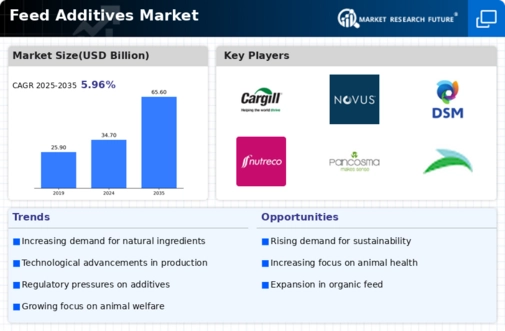
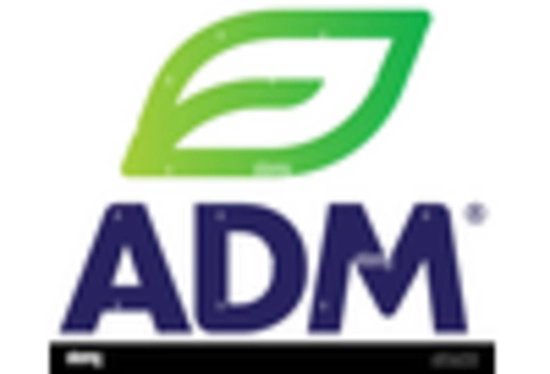
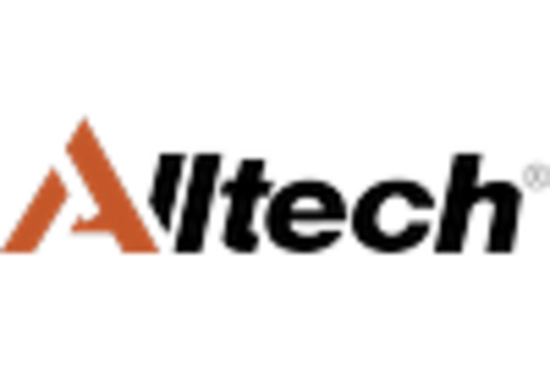


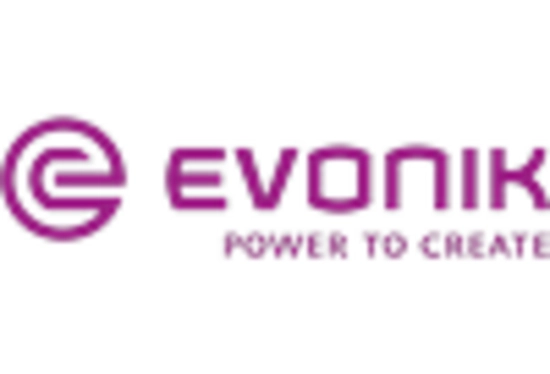
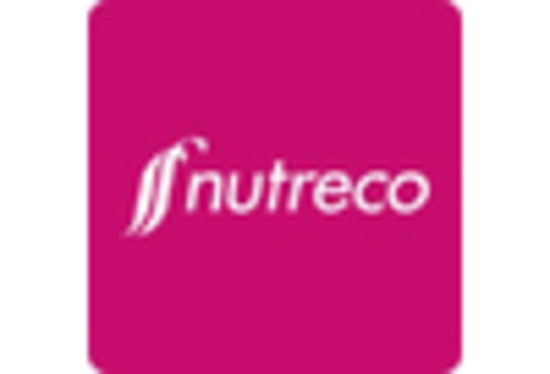

Leave a Comment